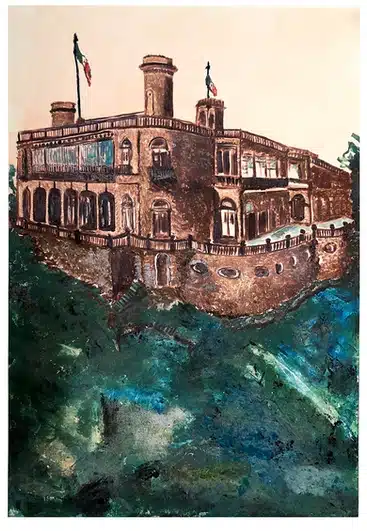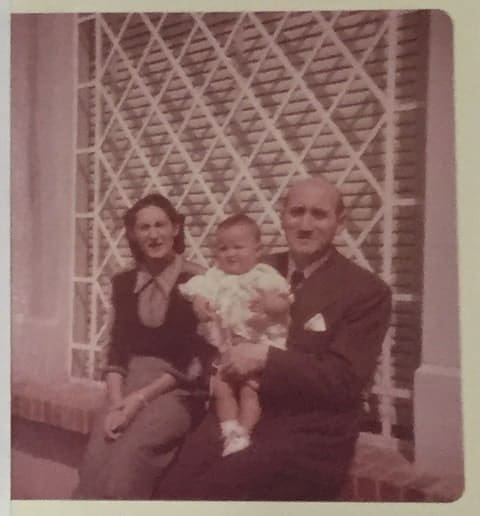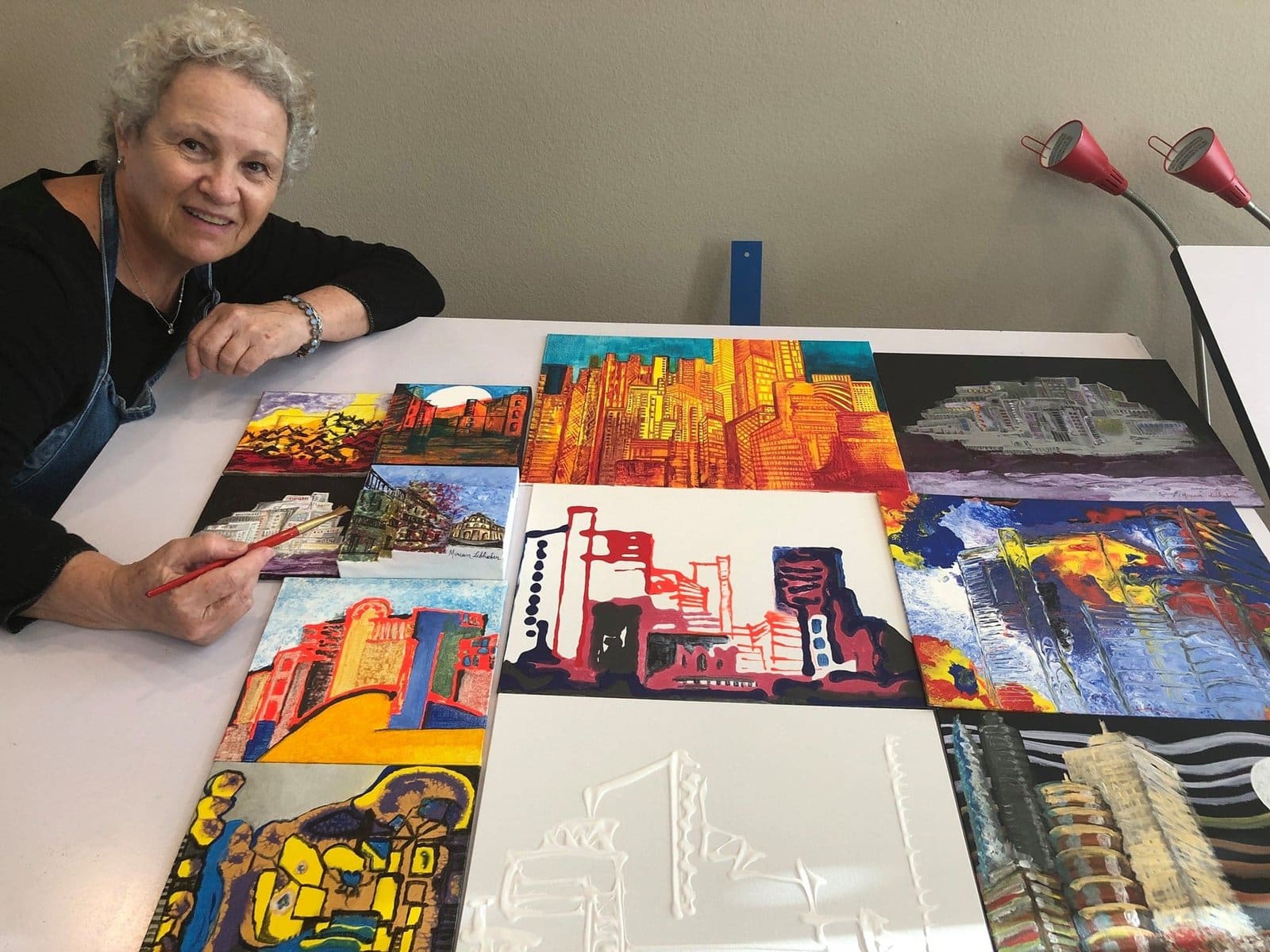Miriam Libhaber is a Mexican artist and architect, currently based in San Diego, CA. Born Miriam Tabachnik Edelsztejn in 1951, she grew up in Mexico City as the first generation of her family born in Mexico, in a Yiddish-speaking household of Polish Holocaust survivors.
Known for her vibrant cityscapes and abstract paintings, Libhaber’s work is celebrated worldwide for its depth and meaning. Although she showed a passion for painting from a young age, her early artistic journey led her to architecture. After eight years working as an architect, she ultimately shifted her focus to painting, pursuing formal training at UNAM in Mexico.

Miriam Libhaber is recognized internationally, with over 30 solo exhibitions and participation in more than 200 group shows across her career. She has received six awards for her graphic work, including a prize at the Painting Biennale in Caracas, Venezuela. Her ceramics have been featured twice in the Utilitarian Ceramics Biennial at the Franz Mayer Museum in Mexico.
Libhaber’s works are held in the collections of the Buenos Aires Engraving National Museum, the Southern Nevada Museum of Fine Arts in the USA, and, in Mexico, the Claustro de Sor Juana and the Cultural Institute of Campeche, among others. In 2012, she published her book, Reference Points, which presents over 70 images of her monoprints inspired by iconic buildings in Mexico City.

Miriam Libhaber is recognized internationally, with over 30 solo exhibitions and participation in more than 200 group shows across her career. She has received six awards for her graphic work, including a prize at the Painting Biennale in Caracas, Venezuela. Her ceramics have been featured twice in the Utilitarian Ceramics Biennial at the Franz Mayer Museum in Mexico.
Libhaber’s works are held in the collections of the Buenos Aires Engraving National Museum, the Southern Nevada Museum of Fine Arts in the USA, and, in Mexico, the Claustro de Sor Juana and the Cultural Institute of Campeche, among others. In 2012, she published her book, Reference Points, which presents over 70 images of her monoprints inspired by iconic buildings in Mexico City.

Although Miriam Libhaber transitioned away from her career as an architect, her passion for architecture remains at the heart of her artistic work. Architecture continues to inspire her, but color has also become a defining element of her style. As she explains, “When I paint the Mexico City landscapes, people understand that it is Mexico because of the shape of the building. In this collection, I want them to recognize buildings through my color. The building can be gray concrete, but I will paint it yellow or orange. It doesn’t matter; I paint whatever color I want.” This creative approach makes her collections—such as Mexico City Landscapes and City Delights—vivid and unique.
During the COVID-19 pandemic, Miriam moved to San Diego to be with her family, a relocation that sparked new artistic themes. She describes the transition as “moving with my ‘cities’ to San Diego by boat.” This period inspired new collections featuring boats and bridges, symbolizing her journey and adaptation to a new environment. Once settled, Miriam felt compelled to address another important theme: preserving traditions. This led to the creation of her “Traditions” collection.
Today, Miriam Libhaber continues her creative practice, drawing inspiration from the experiences of life itself. As she says, “I am grateful for life. Art gives a life.” She continues to experiment with new techniques, including the pouring method, and her recent works reflect her response to current events, such as the situation in Gaza and the war between Israel and Palestine.
For more about Miriam Libhaber, visit:
References
https://www.facebook.com/miriam.libhaber/
https://www.linkedin.com/in/miriam-libhaber-17215b9/?originalSubdomain=mx
https://www.youtube.com/channel/UCo-Uw90Ypp_nuQGhlwkkIjw
https://www.instagram.com/libhabermiriam/?hl=en
https://lessedra.com/mixed_media_info.php?artistid=182
https://www.facebook.com/CulturAzcapo/videos/miriam-libhaber/1458699688088200/


Eres mi amiga del amparo?, de ser así soy Sergio Sotelo y me encantaría amueblar fueras tú